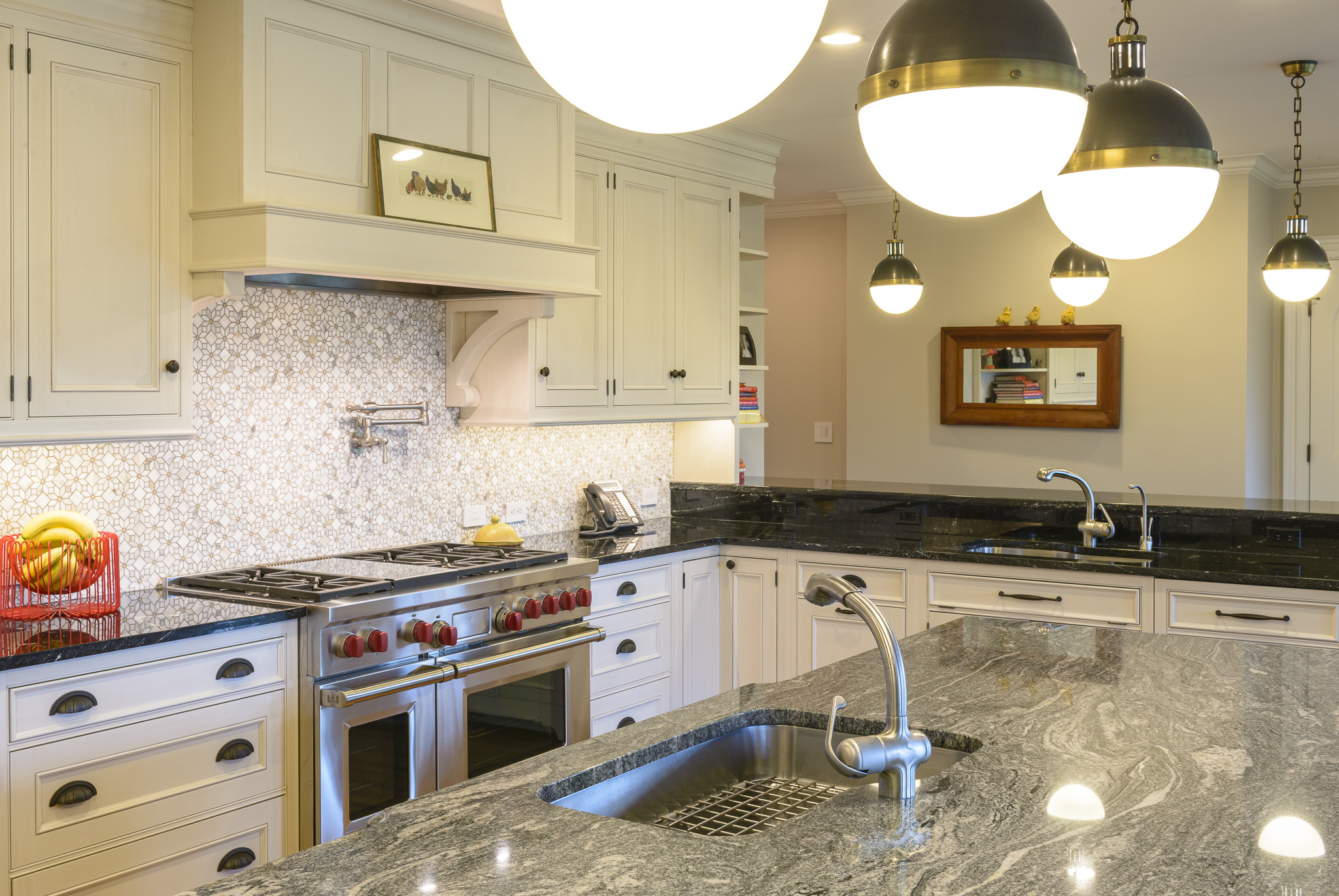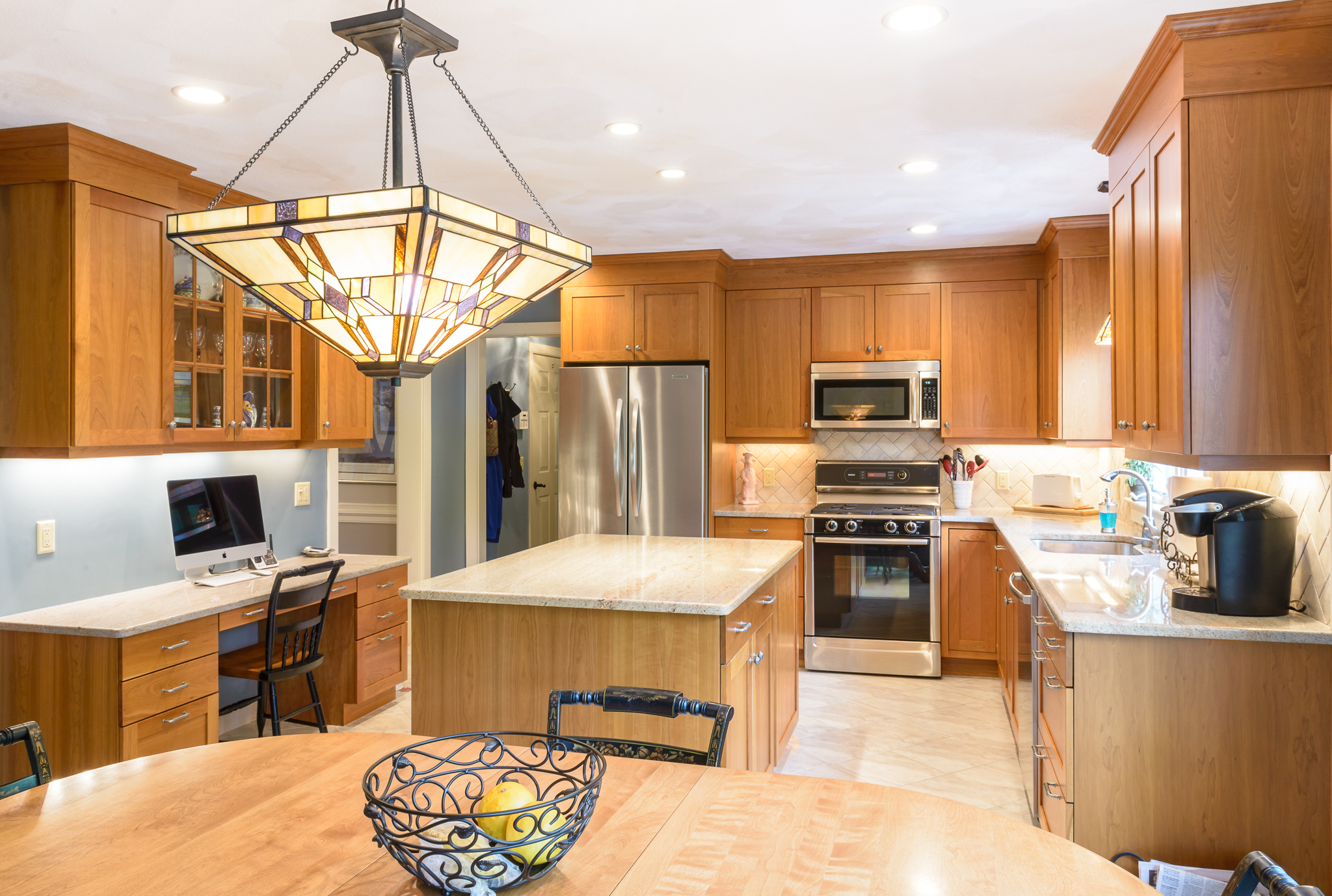Light Up Your Life By Lighting Up Your Kitchen
The importance of an effective Kitchen lighting plan.
Most homeowners spend a considerable amount of time and research when picking out elements for their new kitchen renovation. While choices in cabinetry, countertops, layout, flooring, and appliances are usually the main concern, choices in lighting are important too, but often get overlooked.
A good lighting plan can enhance the beauty and effectiveness of your new kitchen. Lighting is not only a necessity, it can also be a great way to contribute to the overall mood of your space as well as draw attention to your favorite details.
When we think about lighting plans, there are 4 types to consider: task, ambient, accent, and decorative. An effective lighting plan uses these 4 types of lighting seamlessly layered together. “The most common mistake people make is trying to light their entire kitchen with one fixture centered in the ceiling. It ends up being what I call a ‘glare bomb’, visually overpowering everything in the space, including family and friends.” - Randal Whitehead, a San Francisco lighting designer.
Task Lighting
Task lighting is the first layer to think about in your lighting plan. As the name suggest, this is the light that will help you with your food preparation and everyday tasks in the kitchen. Task lighting should be placed wherever you will be reading recipes, chopping, measuring, or even washing dishes. Depending on your layout, these can be placed under the cabinets, over the island, and even recessed lights in the ceiling.
Task lighting should be a bright, directional light illuminating the specific work areas in your kitchen.
Ambient Lighting
Ambient lighting is a soft yet bright indirect lighting layer. It is the overall background layer which creates a warm inviting feeling in the kitchen. Ambient light should be broad and fill in the harsh shadows than may be caused by the stronger task lighting. Ambient lighting can take the form of ceiling fixtures, soft pendants over the island (unless a more direct task lighting is needed), recessed lights, and adjustable track lighting. Having the ambient light on a dimmer is a great way to be able to blend it with the other layers.
Accent Lighting
Accent lighting is used to draw attention to specific areas of your kitchen. This layer adds depth and dimension to the space. This could be a light inside of an open or glass front cabinet or shelf, a toe kick light, or a light that softly shines across the textured surface of your decorative backsplash.
Decorative Lighting
The final layer to think about is decorative light. This kind of light is even more specific than the accent layer. Decorative lighting is not always necessary, but can add that final touch to your lighting plan. This type of lighting should be proportional to the size and grandeur of your kitchen. This can be anything from a crystal chandelier or wall sconce to a simple, well placed candle.
The best time to think about your lighting plan is early on in your planning schedule. Often, a kitchen renovation requires walls and ceilings to be opened or replaced. It is much easier to add wiring and lighting fixtures at this time rather than after everything is buttoned up. If there is little room in your renovation budget for the ideal lighting plan, one option is to have at least all of the wiring and junction boxes installed. Then later down the road, fixtures can be purchased and easily added.
Proper lighting can certainly enhance an already beautiful kitchen. When you are in the design process it is definitely a discussion you should have with your kitchen designer and they can help you find the best locations and the most appropriate type for your kitchen. Kitchen Associates has a network of electrical and lighting specialists who can meet with you on site and discuss your needs and options.





